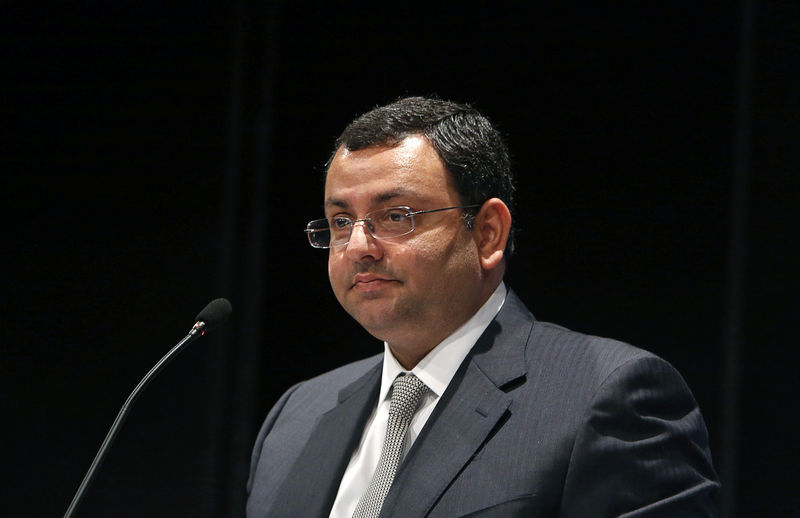By Aditi Shah and Euan Rocha
NEW DELHI (Reuters) - Before he was ousted as chairman of Tata Sons, Cyrus Mistry presented the board with a roadmap to boost profitability, squeeze out more money for shareholders and more than double the Indian conglomerate's market value in 10 years, people familiar with the plans told Reuters.
In his Vision 2025 strategy document, which ran to more than 30 pages, Mistry planned to target 10 percent annual growth and boost the group's value to $350 billion - more than doubling Tata Sons' 66 percent stake to over $200 billion.
The strategy included restructuring loss-making businesses like Tata Steel's (NS:TISC) European unit; being less dependent on crown jewel Tata Consultancy Services (TCS) (NS:TCS); and piggy-backing on India's economic growth by investing in consumer-facing units, financial services and digital ventures.
The strategy was outlined to the Tata Sons board - and to family patriarch Ratan Tata - three times in 18 months, with the last presentation just months before Mistry's ouster, the people said. Tata has since taken over as interim chairman.
The strategy, one of the people said, was designed with the 150-year-old firm's investment principles in mind, with a focus on the long-term, entering pioneering industries, and holding a controlling stake in ventures.
It aimed also to raise the return on capital employed to 15 percent, and more than double the dividend payout ratio to up to 25 percent by 2025.
In a bruising, public row since Mistry was dismissed as chairman last month, some have criticized his lack of a long-term plan for the group. He remains chairman of some group companies including Tata Steel and Tata Motors (NS:TAMO).
A spokesman for Tata Sons said "a 5-year plan was presented in September, and was not found suitable."
Mistry's office did not respond to a request for comment.
'LEGACY HOTSPOTS'
Mistry was also criticized by some for his decision to sell what they felt were Tata family jewels, such as Tata Steel's loss-making Europe unit.
Despite an outside reputation as a ruthless businessman focused on profit, one of the sources said he spent more than two years trying to fix such legacy issues, including visiting the Welsh steelworks at Port Talbot to talk to union workers.
Mistry initiated merger talks with Germany's ThyssenKrupp (DE:TKAG) in an effort to salvage the steel business, even though it faced high UK energy costs, taxes and a costly pension scheme.
"If Tata Steel is able to merge with ThyssenKrupp it will be able to create a robust new company," the person said, noting talks with the German firm have slowed amid Tata's management upheaval.
Mistry also sought to deal with other "legacy hotspots" such as Indian Hotels Co (NS:IHTL), Tata Teleservices and the $1,500 Nano car.
"The strategy was focused on reducing the dependence on more cyclical businesses, and focusing more on more stable, consumer driven businesses," said another of the sources.
It made little sense to invest more in the Nano as the car would not have been able to meet stricter safety rules due to come into force in two years' time, the person noted.
One growth area that Mistry planned to develop further was financial services, such as an insurance venture, with a planned annual growth rate of 20 percent. Another focus area was Tata Global Beverages (NS:TAGL).
